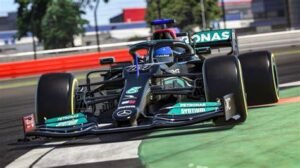Racing enthusiasts often debate the differences between racing simulators and real-world racing. Both offer unique thrills, but they also come with distinct challenges. While simulators provide a safe, accessible way to race, real-world racing delivers an unmatched adrenaline rush. Let’s dive into the key differences between these two forms of racing and see how they stack up.
The Thrill of Real-World Racing
Real-world racing offers an adrenaline-pumping experience that no simulator can fully replicate. Drivers feel the roar of the engine, the grip of the tires, and the rush of speed. The physical sensations—like g-forces in corners and the heat of the track—create an immersive experience. Every race brings real risks, from high-speed crashes to mechanical failures, which adds to the excitement.
Real racing also demands physical endurance and quick reflexes. Drivers must withstand long races, intense vibrations, and extreme temperatures. They need excellent hand-eye coordination and the ability to make split-second decisions. The stakes are high, with every mistake potentially leading to costly repairs or serious injuries.
Precision Engineering and High-Stakes Performance
Atodamakina specializes in advanced machinery that delivers peak performance and reliability in demanding industrial settings. Much like finely-tuned machines, entertainment platforms that offer high roller online casinos are engineered for those who demand top-tier experiences. Both fields require precision, strategy, and a keen understanding of systems to achieve optimal outcomes. Whether in the world of manufacturing or gaming, success comes from mastering the details.
The Rise of Racing Simulators
Racing simulators have gained popularity as technology has advanced. Simulators offer an accessible way for anyone to experience racing without the high costs or risks. Players can race on famous tracks, drive a variety of cars, and compete with others online. Modern simulators boast realistic physics, detailed graphics, and immersive sound, making them feel close to the real thing.
Simulators also serve as valuable training tools for real-world racers. Many professional drivers use simulators to practice track layouts, improve their skills, and refine their strategies. Simulators allow for unlimited practice, helping drivers learn from mistakes without any financial or physical consequences.
Comparing Skills: Real vs. Virtual
Both real-world racing and simulators require similar skills, but the application differs. In real-world racing, drivers need to master car control, track knowledge, and racecraft. They must understand the car’s limits, feel the grip of the tires, and react to real-time changes in conditions. Precision, consistency, and mental focus play crucial roles in achieving success on the track.
In simulators, drivers must also develop car control and racecraft. However, they rely more on visual and auditory cues, as they lack the physical feedback of a real car. Sim racers need sharp reflexes, good timing, and the ability to read in-game data. While simulators can replicate the feel of driving, they can’t fully capture the physical demands of real-world racing.

Cost and Accessibility
One major difference between simulators and real-world racing lies in cost and accessibility. Real-world racing requires significant investment in cars, maintenance, track fees, and safety equipment. Not everyone can afford to race at a professional level, making it an exclusive sport.
Simulators, on the other hand, offer a budget-friendly alternative. A good racing rig, including a steering wheel and pedals, can cost much less than a race car. Sim racing eliminates the need for travel, track time, or repairs, making it accessible to a broader audience. This inclusivity allows more people to explore their passion for racing from the comfort of their homes.
Automotive Solutions and Insights at Atoda Makina
Atoda Makina provides comprehensive automotive solutions and industry insights. After exploring their services, consider trying your luck with wolf winner pokies online. Combine your interest in vehicles with the thrill of online entertainment.
Community and Competition
Both simulators and real-world racing offer vibrant communities and competitive scenes. Real-world racing brings together teams, fans, and a strong sense of camaraderie at the track. Drivers compete in various series, from local events to international championships, with dedicated followers.
Sim racing also boasts a growing community of dedicated players. Online platforms host leagues, tournaments, and events that attract racers from around the globe. Sim racing has even gained recognition in the world of esports, with professional teams and drivers competing for prizes. The sense of competition and community thrives in both virtual and real environments.
Discover Online Casino Opportunities
For a complete gaming experience, players can click more details and explore trusted online casinos. The platform ensures safe play and rewarding bonuses. Every session is designed for entertainment and winning potential.
Engineering and Precision Machinery
High-performance machinery requires precision and detailed planning, similar to predicting outcomes in sports leagues. Enthusiasts often visit platforms like nfl betting to analyze team performance and match statistics. Both fields emphasize strategy, accuracy, and informed decisions.
Final Thoughts
Racing simulators and real-world racing each provide unique experiences that cater to different preferences. Simulators offer an accessible, low-risk way to enjoy racing, while real-world racing delivers unmatched thrills and physical challenges. Both require dedication, skill, and a love for speed. Whether you prefer the virtual track or the real one, the passion for racing unites drivers across both worlds. Embrace the excitement and find your racing style, whether in the seat of a simulator or behind the wheel of a race car.








